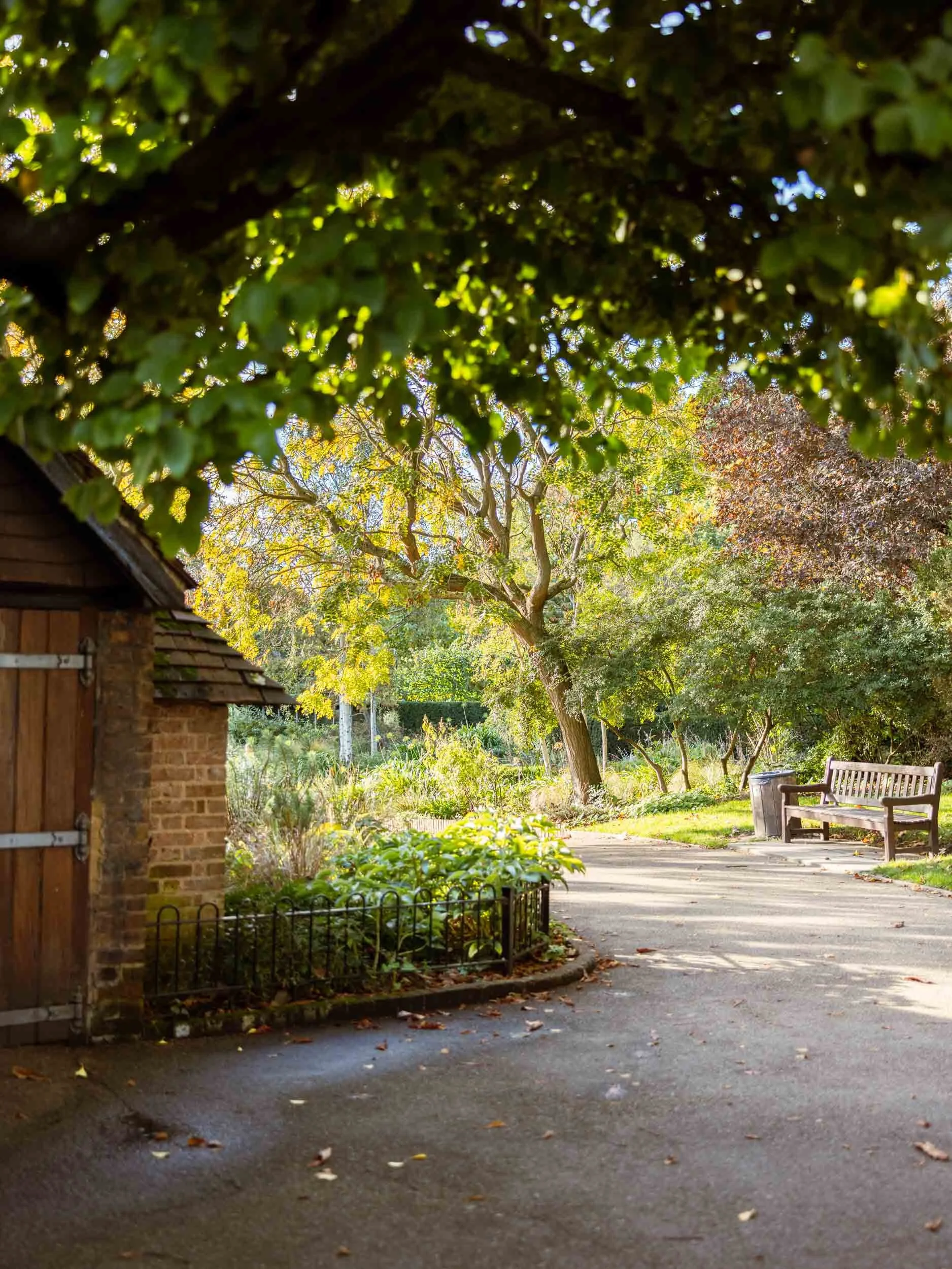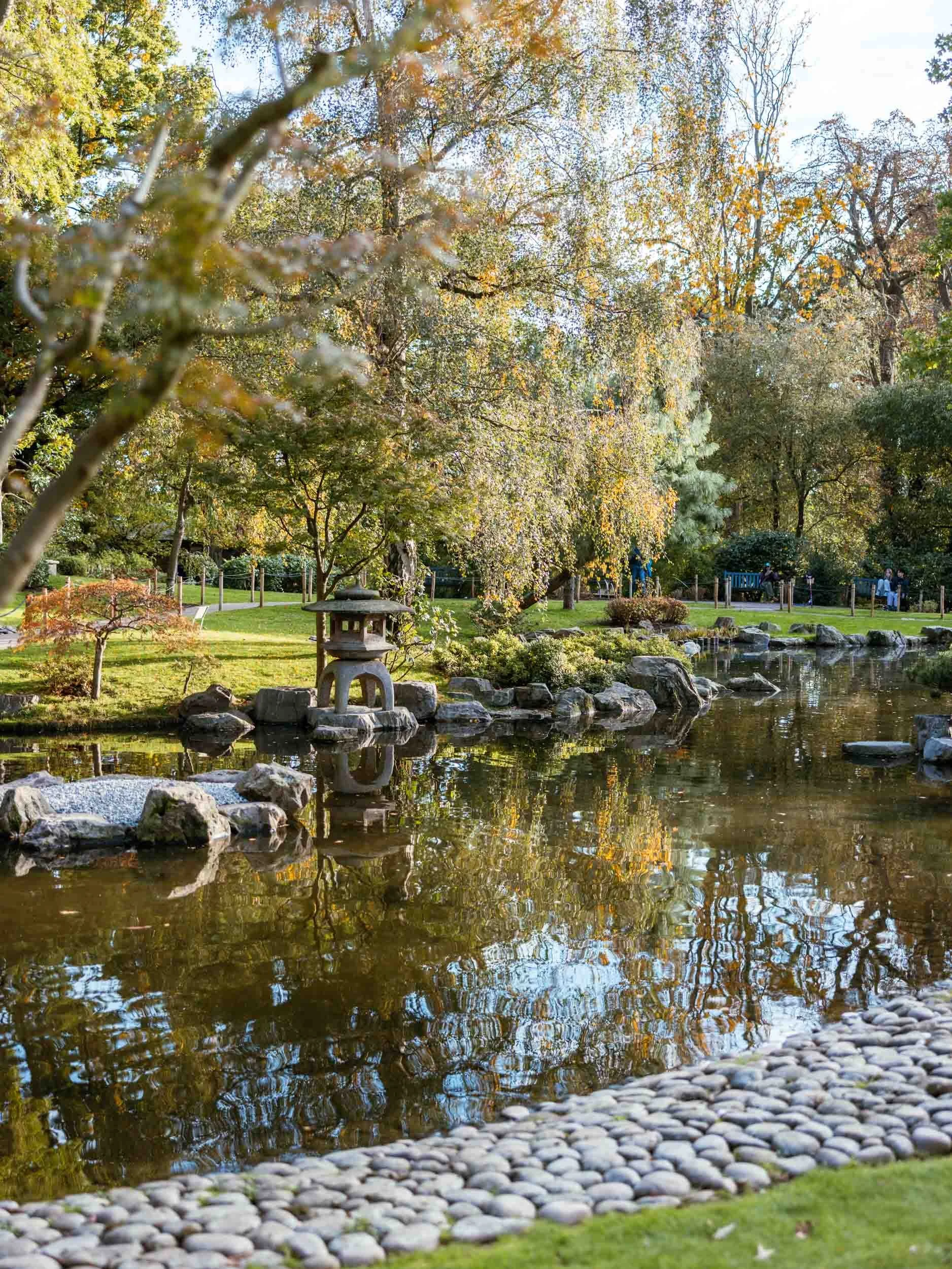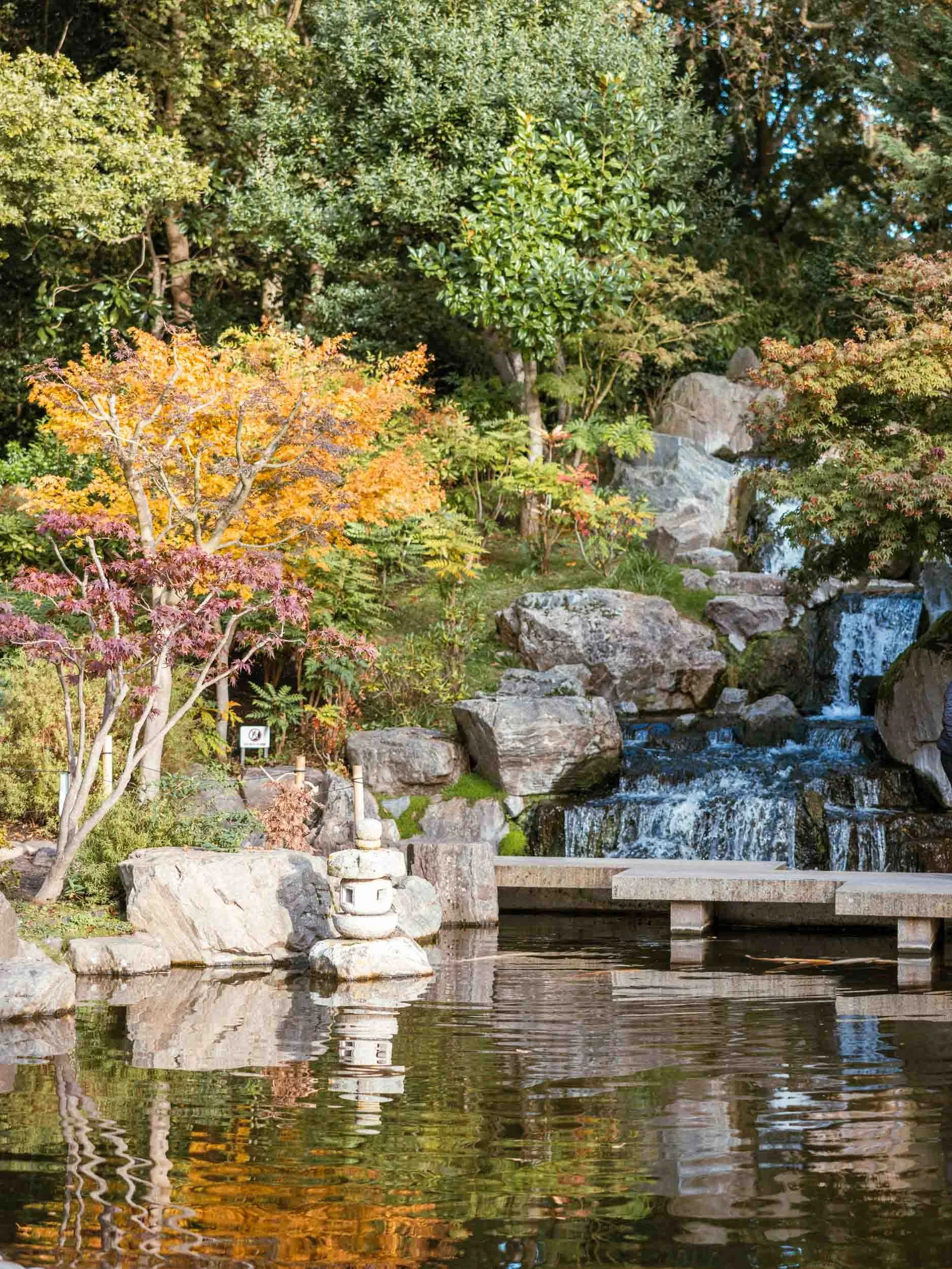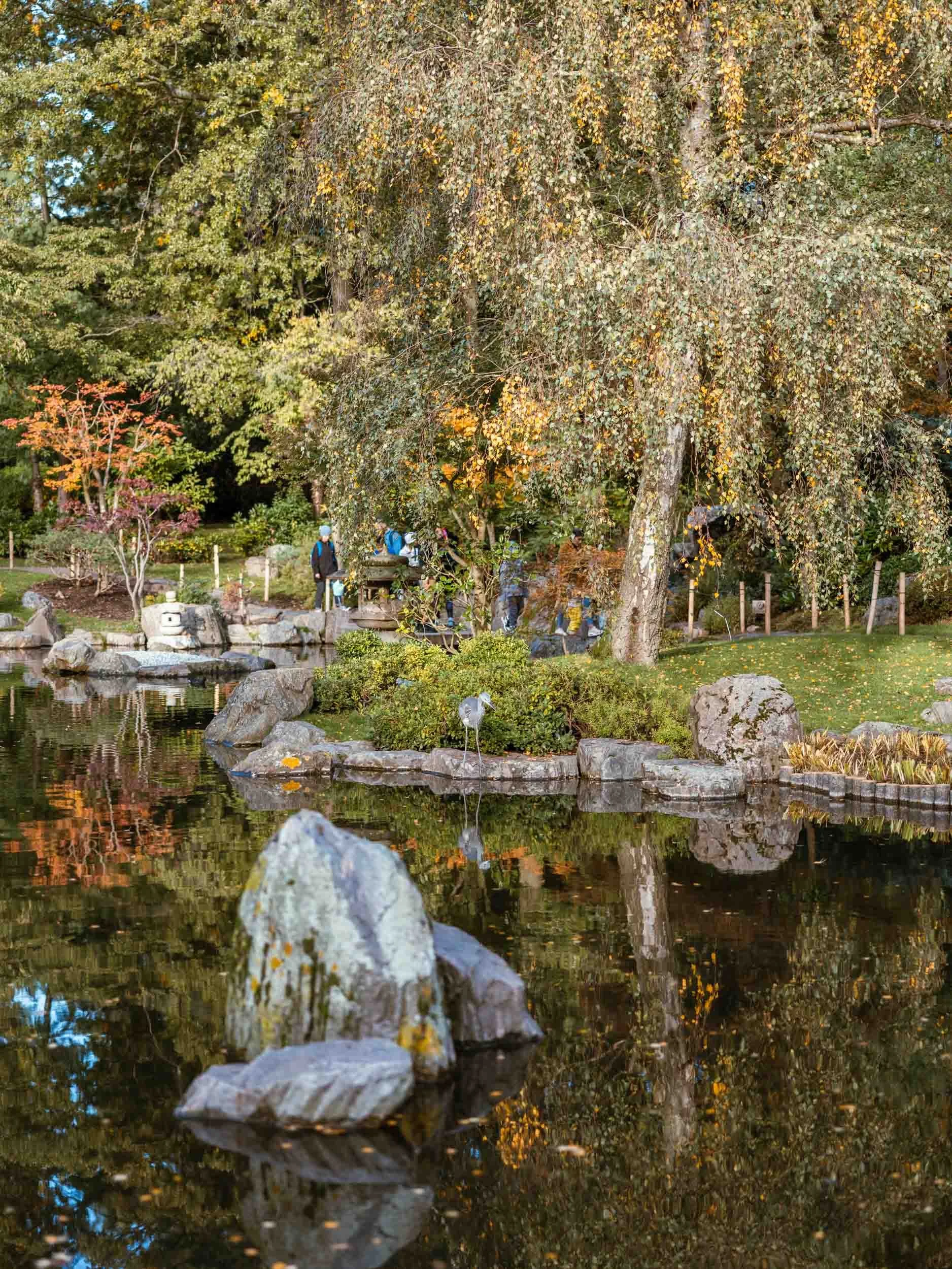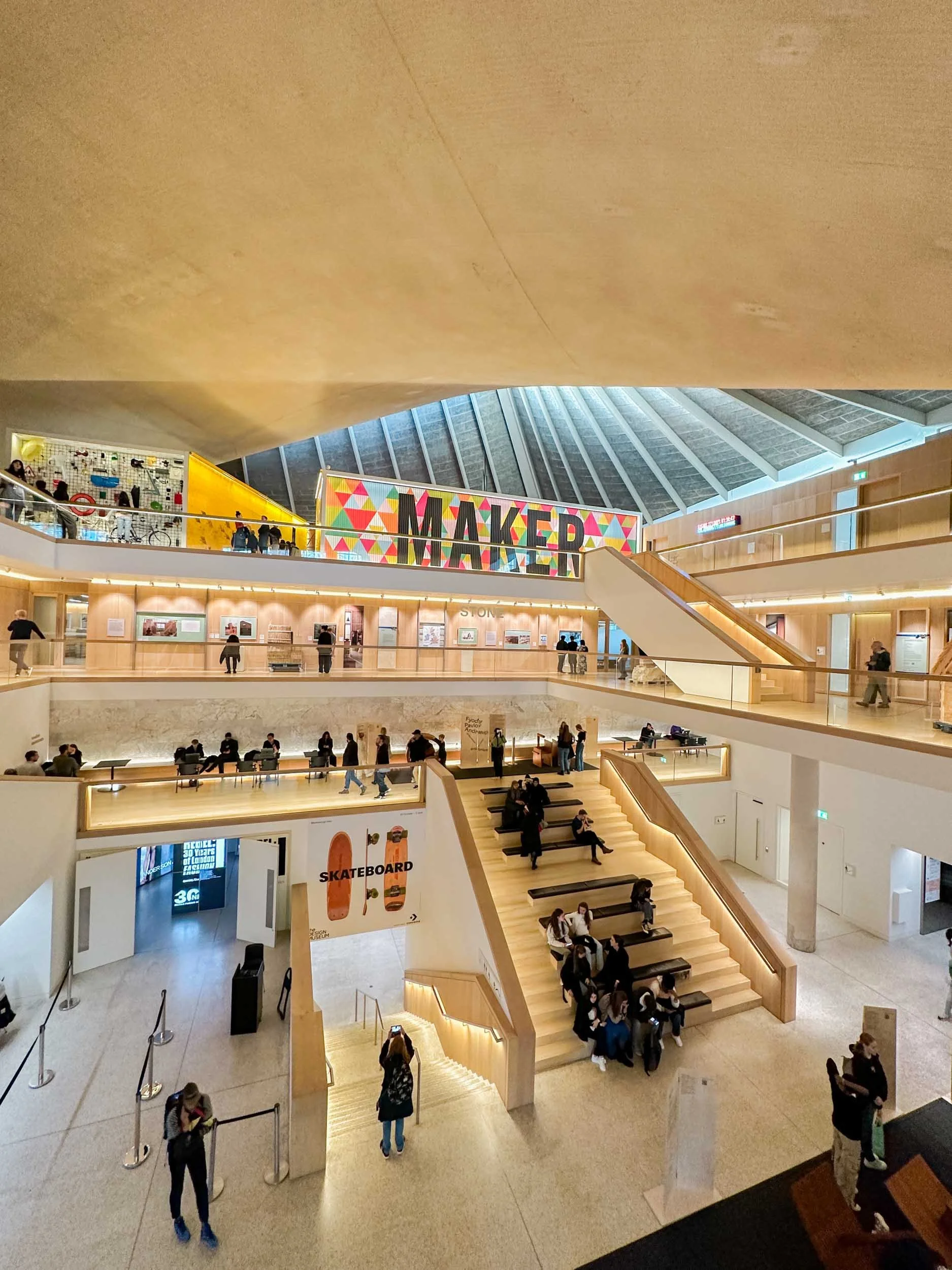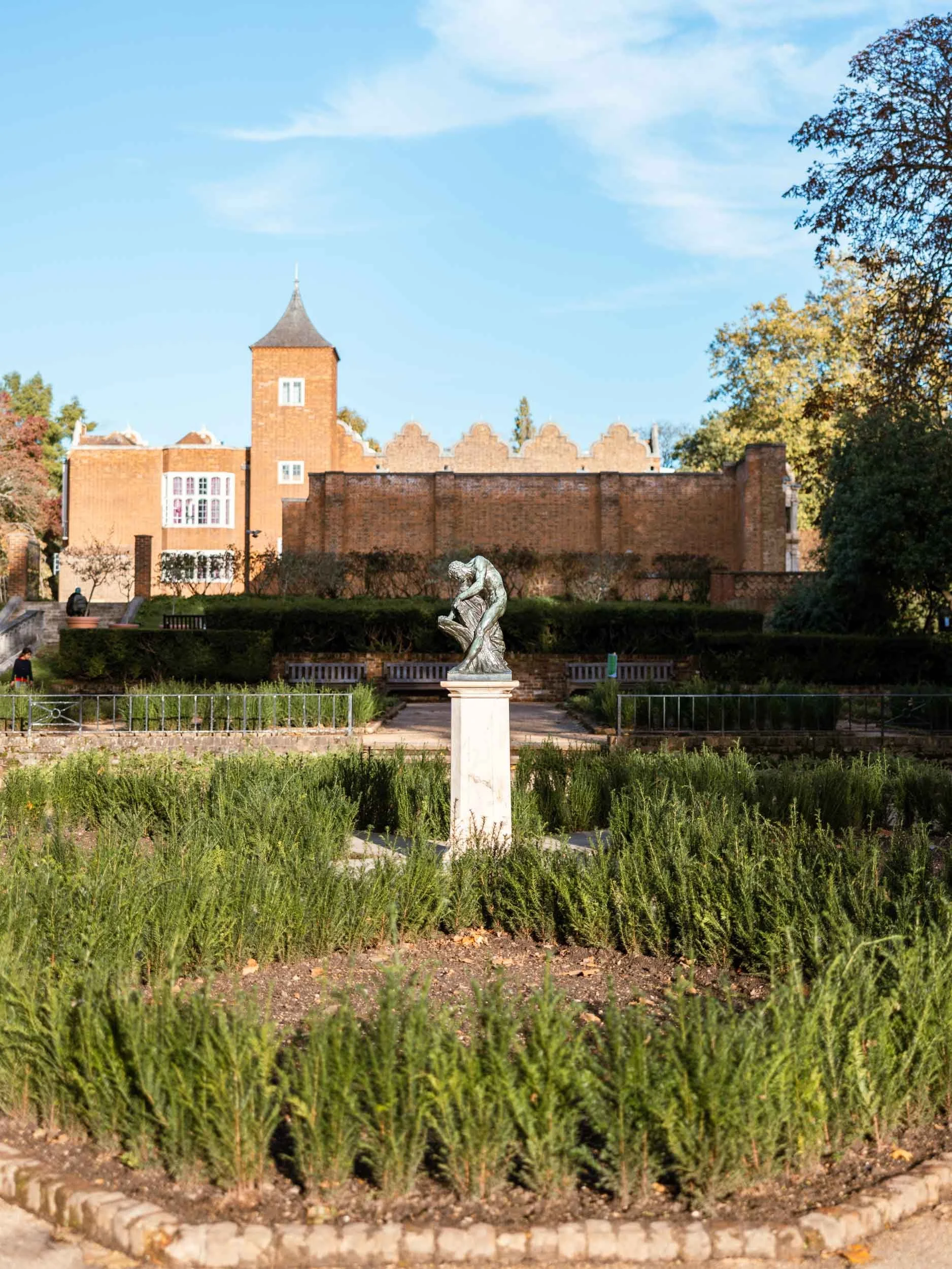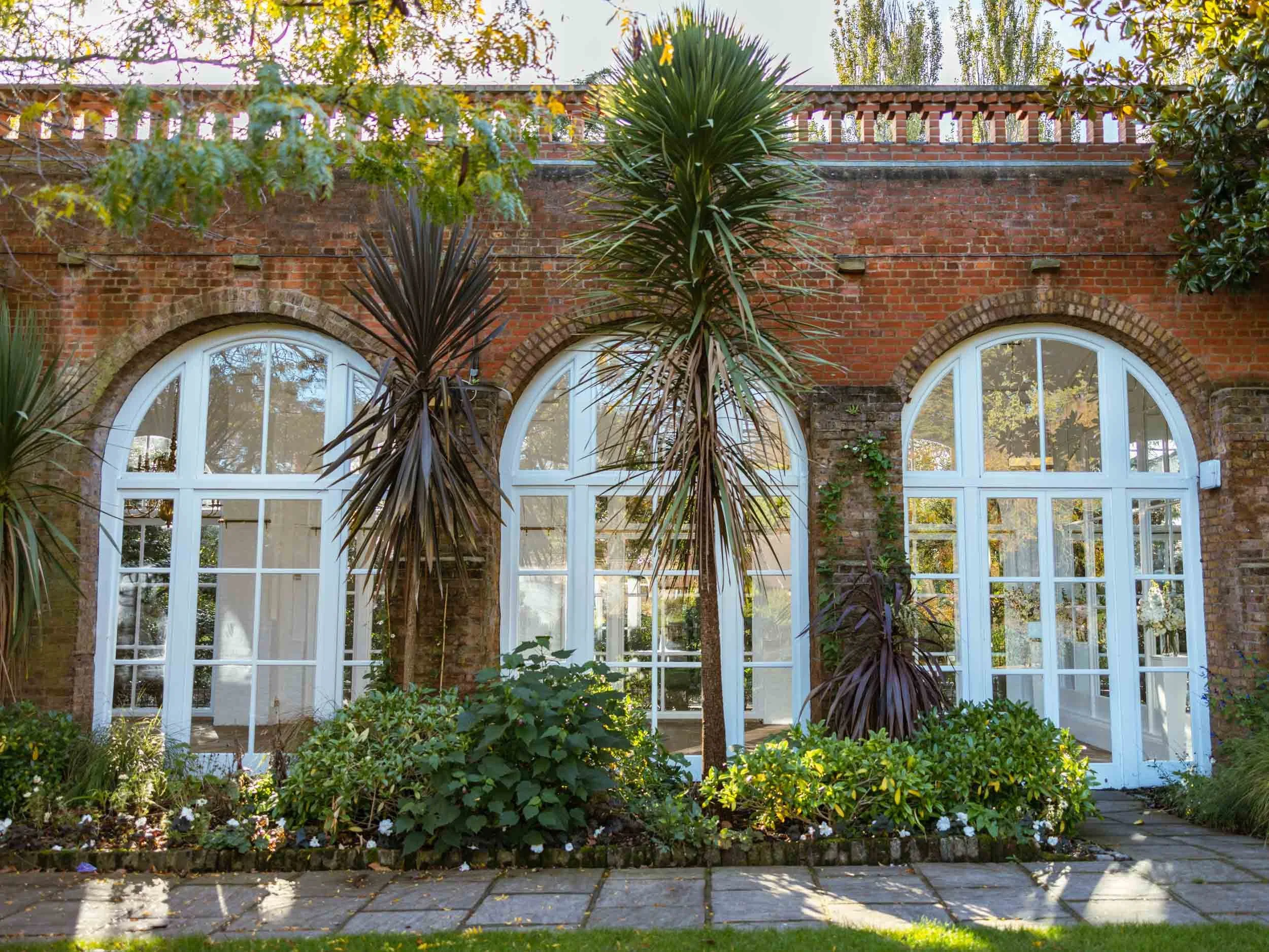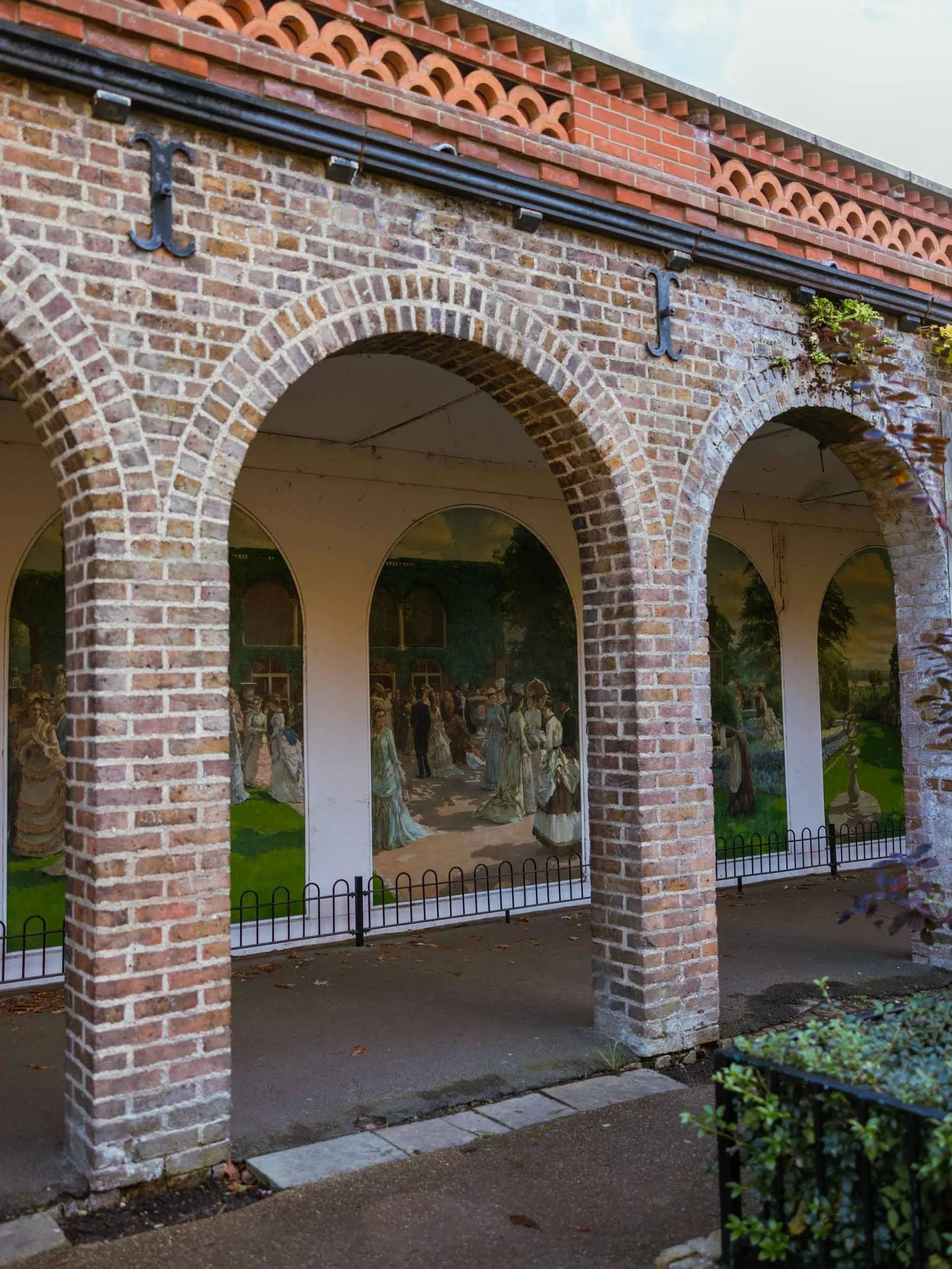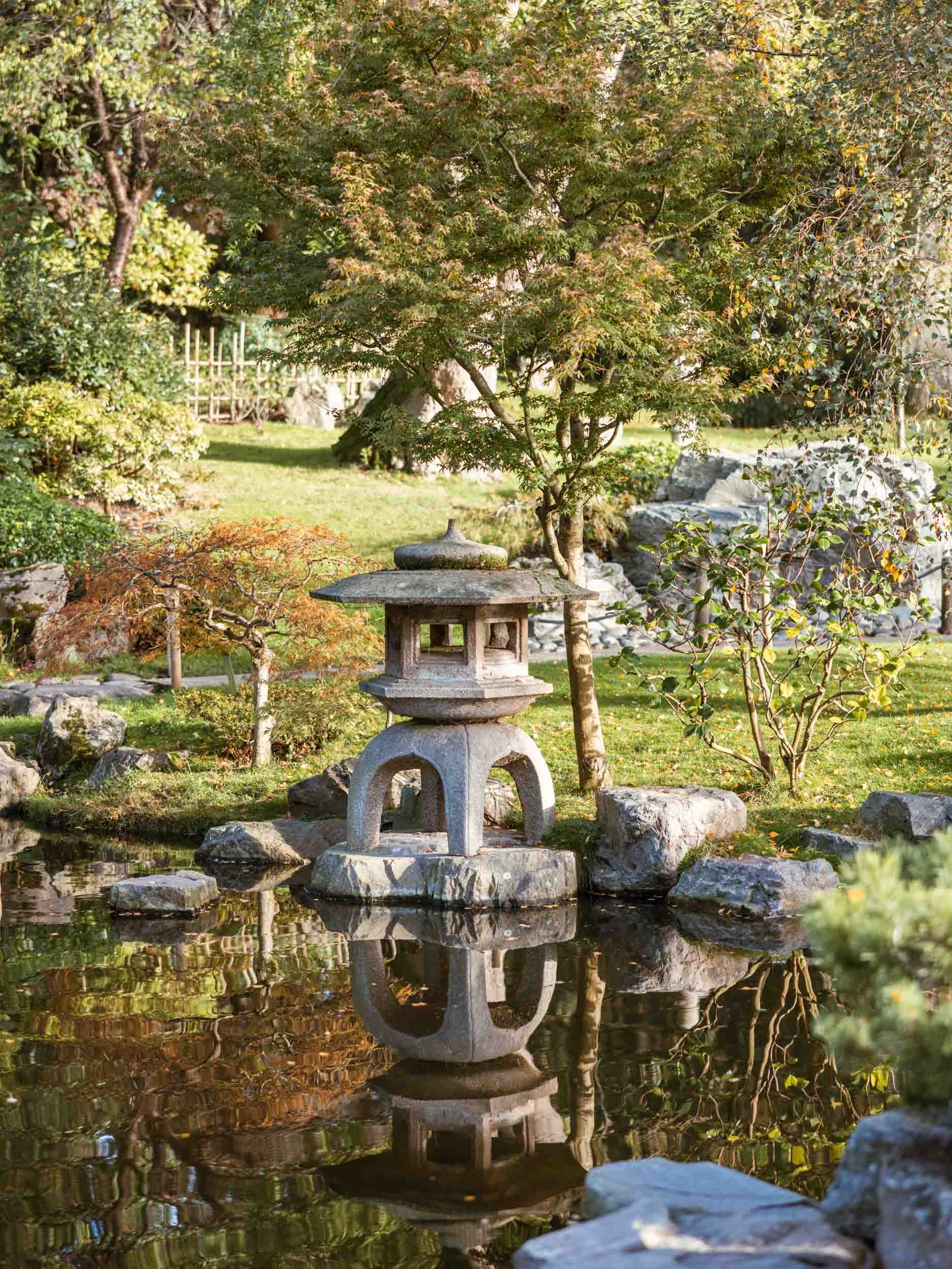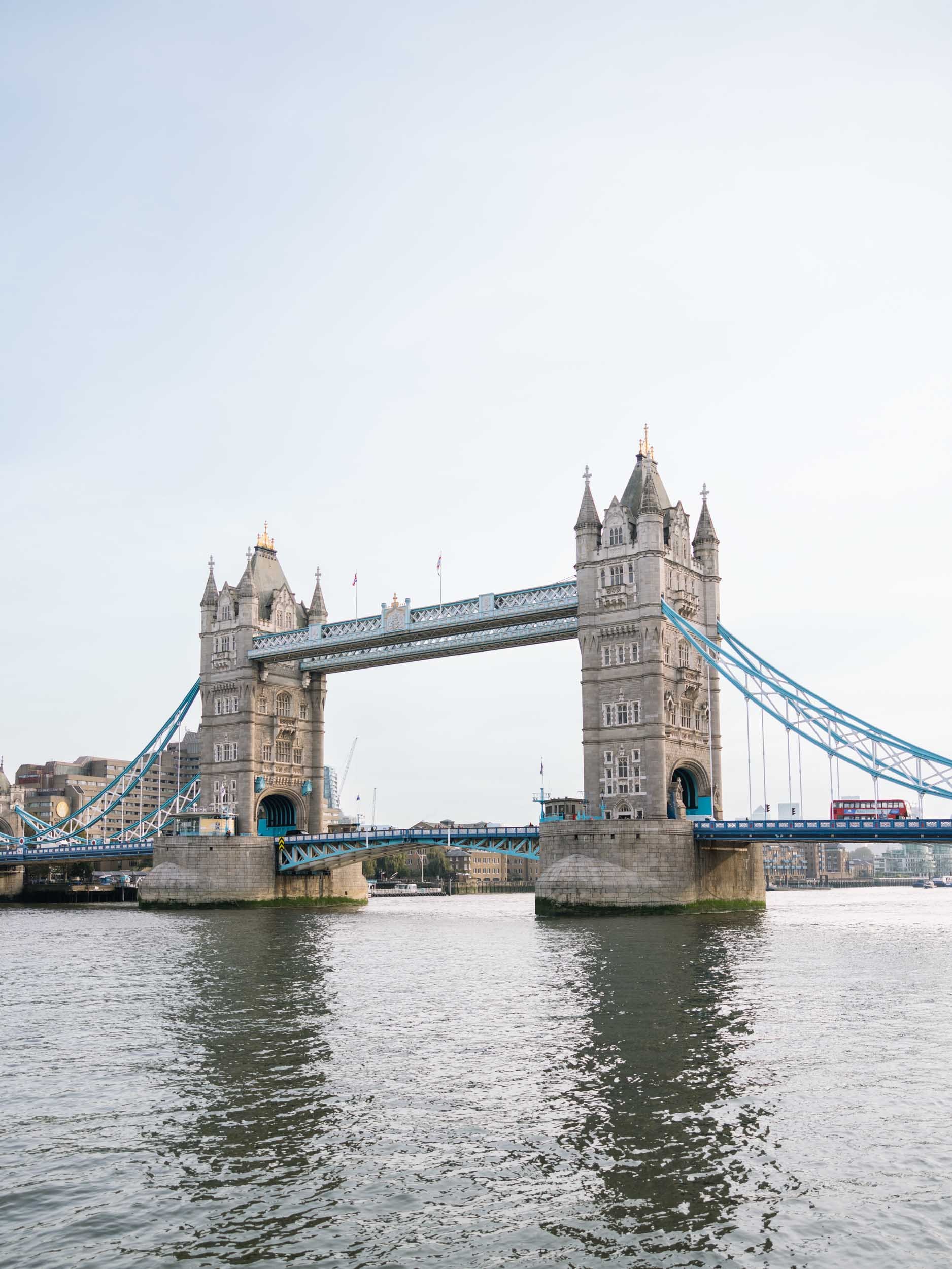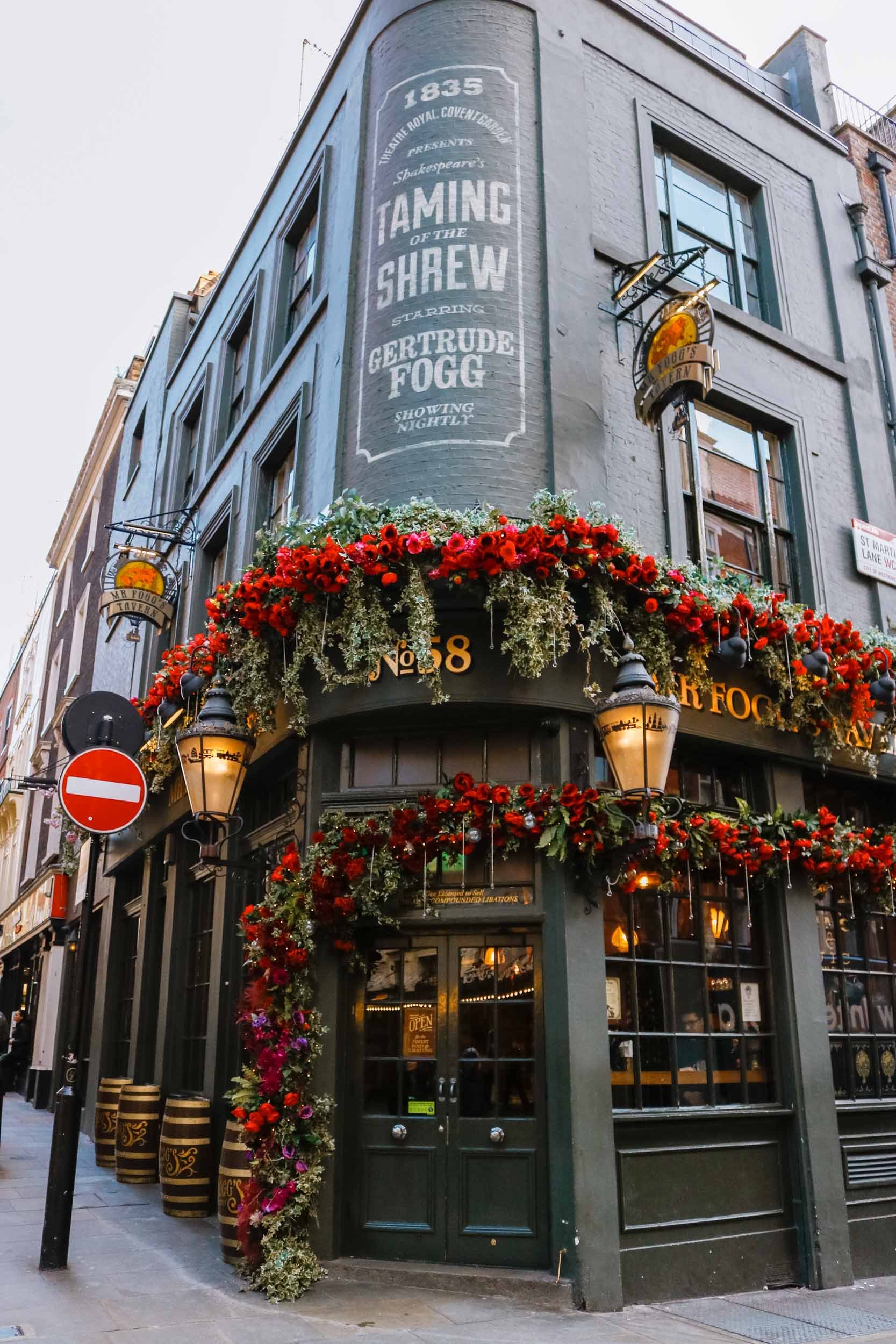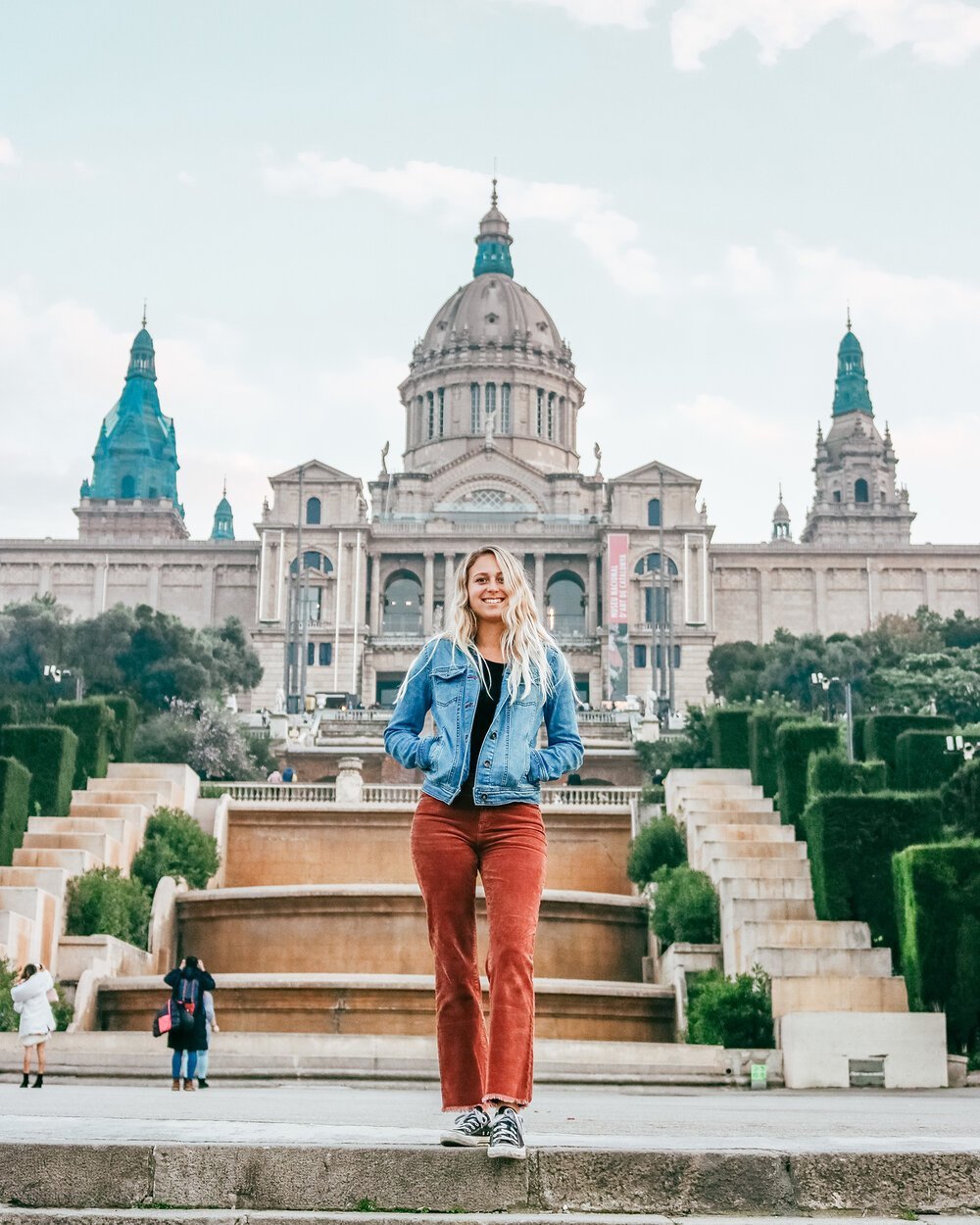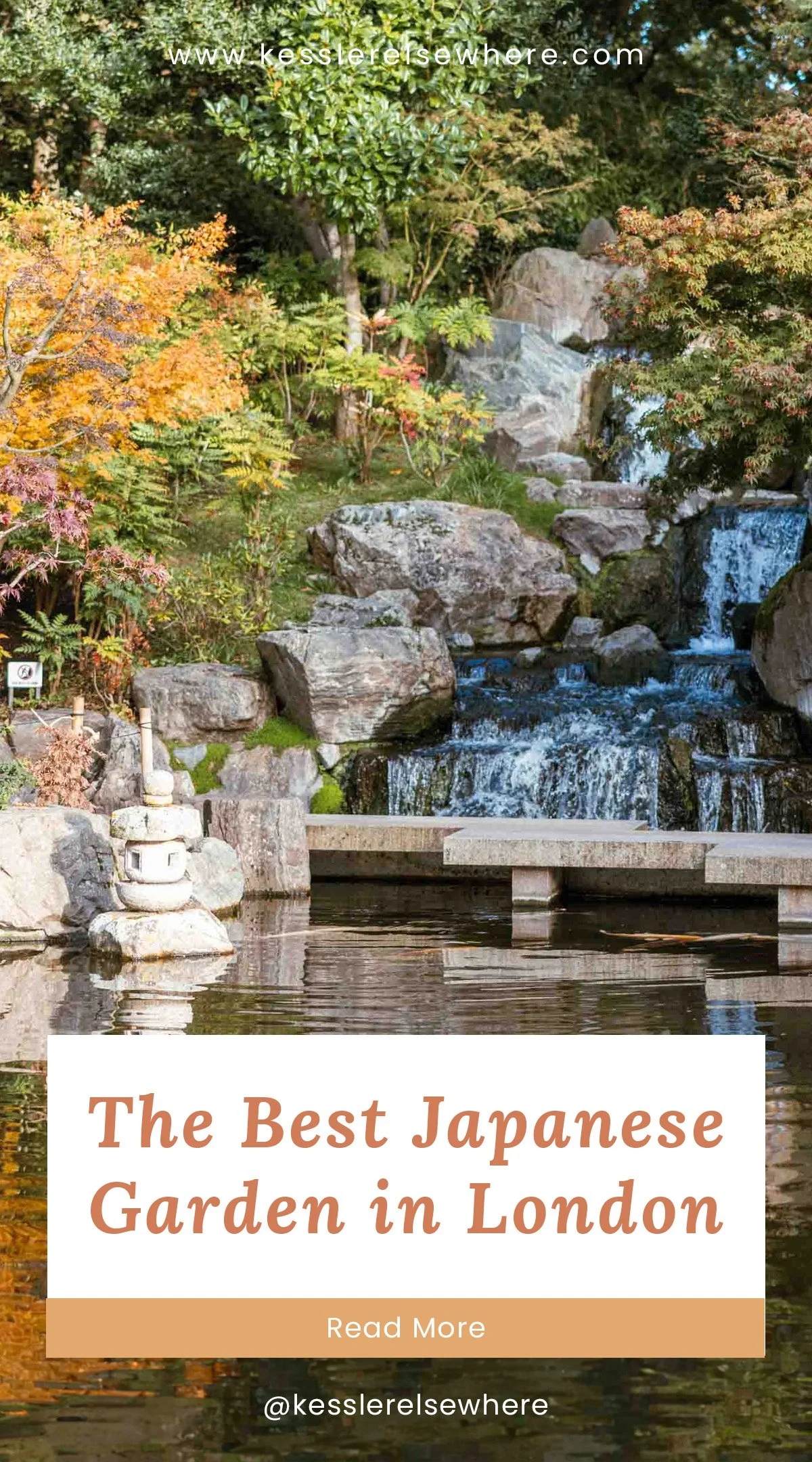Kyoto Garden in Holland Park: A Japanese Garden in London
Step into a tranquil Japanese garden in London, away from the hustle and bustle of the city, called Kyoto Garden. Within the beautiful Holland Park is a Japanese garden filled with lush plants, a waterfall, a koi pond, and if you’re lucky, roaming peacocks.
Kyoto Garden is one of the best gardens to visit in London. It is well-maintained and has plants that flourish year-round. Visit in the fall to see large pops of color in the Japanese acers throughout the garden.
If you’re planning a visit to London or a local looking for hidden gems and unique things to do in London, Kyoto Garden should be at the top of your list!
This post contains affiliate links that earn me a commission. For more information, read my disclaimer.
Holland Park in London
One of the most beautiful parks in London is Holland Park. It’s a hidden gem located in Kensington and is less than two miles (3 km) from Kensington Gardens. This 54-acre park was once the grounds of a mansion called Cope Castle (more on that later) but is now open to the public.
Holland Park is free to visit and has multiple areas to explore, including the amazing Japanese Garden called Kyoto Garden.
Kyoto Garden in Holland Park
In the center of Holland Park you’ll find Kyoto Garden, a lovely Japanese garden built in 1992 for the Japan Festival in London. It was created by Shoji Nakahara—a Japanese garden designer—through a collaboration between the Royal Borough of Kensington and Chelsea and the Kyoto Chamber of Commerce in Japan.
It’s not an exceptionally large garden compared to other Japanese gardens I have been to, like the one in San Francisco. If you walk at a normal pace, you can walk the entire path around the central pond in about five minutes.
Pay attention to the arrows on the path, as it is only meant to be walked one way since it is a bit too narrow to pass people comfortably.
The garden is quiet and peaceful, with wildlife, a lovely waterfall that cascades down into the pond, a bridge, and Japanese stone sculptures.
It is filled with Japanese Acers that change colors in the fall to vivid oranges, yellows, and reds. When I visited at the end of October the leaves had begun to change already and were a beautiful range of colors.
Tips for Visiting Kyoto Garden and Holland Park
Wear comfortable shoes: The park isn’t large, but you will want to walk around it and explore the whole thing. I highly recommend these New Balance Trail Shoes that have gotten me through many 10-mile walking days without sore feet!
Time your visit: Spring is a great time to visit to see the flowers blooming in Holland Park, but fall is the best time to visit Kyoto Garden because of the incredible fall colors.
Do not feed wildlife: A general rule to follow wherever you go is to refrain from feeding any animals, no matter how cute they are as they beg you for food!
Bring a water bottle: There is a café within Holland Park, but water bottles will cost you upwards of £4. Instead, I bring my 24 oz Owala water bottle on all my trips and fill it up before leaving my accommodation.
How to Get to Kyoto Garden
There are a few bus stops you can get off at around the park. I stopped at The Design Museum (Stop X), which is the shortest walk from the stop to Kyoto Garden.
You can also take the Central Line to the Holland Park tube station. Once you exit the station, it’s about a 0.5-mile (0.8-km) walk to Kyoto Garden.
What to See in Kyoto Garden
Animals: Birds, Squirrels, and Koi Fish
The most notable animals you will find in Kyoto Garden are the peacocks! I had no idea I would see peacocks during my trip to London.
No, they are not indigenous to London and are not even classified as wild birds in the UK. The earliest record of peacocks in the UK was when Sir John de Foxley went to the Holy Land and brought two of them back to his UK home in the 14th century.
After that, peacocks were often given as gifts since they were considered highly valuable and a symbol of wealth. Today, you can spot peacocks throughout the UK, including the ones who live in Kyoto Garden! I only saw two during my visit, but I have read that there are about a dozen or so in this area.
Amongst the peacocks, there are dozens and dozens of squirrels living their best lives darting around the gardens and getting fed by tourists and locals (please don’t feed the wildlife).
I also spotted many birds, including some rose-ringed parakeets flitting between the trees and a lovely great blue heron pruning itself next to the pond.
As you walk around the Kyoto Garden path, look into the pond and you may spot some koi fish. There’s no shortage of animals to see in this area!
Waterfall
The waterfall in Kyoto Garden is the main attraction for most visitors. There’s a bridge you can cross right in front of the waterfall which is an incredibly popular photo spot. You may have to wait your turn to walk across it as people often stand on it while someone across the pond takes their photo.
The waterfall is not tall, but it has many levels with organic rocks for the water to cascade down. Surrounding the waterfall are gorgeous trees and other plants whose colors change during the fall.
I think fall is one of the best times to visit the garden just for the colors you will get to see!
Koi Pond
The somewhat gourd-shaped Koi Pond at Kyoto Garden is the centerpiece of the park. The curvy pathway takes you around the entire pond so you can view it from all angles.
As I mentioned above, this pond has koi in it so keep a lookout for them as you walk along the pathway!
Stone Lanterns
There are a few stone lanterns—called tōrō in Japanese—of varying sizes throughout Kyoto Garden.
Although tōrō were originally only used to illuminate paths in Buddhist temples, they later became commonly used by tea masters in their gardens in the late 16th century.
Today, you will likely find them at any Japanese garden you visit!
Things to See in Holland Park
While Kyoto Garden is a popular attraction within Holland Park, there are many other things to see as well.
The Design Museum
If you take the bus and exit at The Design Museum (Stop X), it’s worth stopping in this free museum. Check out the displays and grab a bite to eat and something to drink at one of the restaurants inside the museum.
I stopped here for a bathroom break and then walked around the museum for a bit before continuing on to the rest of Holland Park.
Something I really love about London is how a majority of their museums are completely free! Not only can you learn and see so much without spending any money, but you will always have a clean bathroom when you need one by popping into the nearest museum.
Dutch Garden
Kyoto Garden isn’t the only garden in Holland Park — there is also the Dutch Garden. Unlike Kyoto Garden, the plants in the Dutch Garden are changed seasonally.
Japanese gardens are often designed with plants that stay lush and green year-round, while the Dutch Garden has flowers and hedges that do not stay alive year-round.
Spring is the best time to visit if you want to see all the flowers blooming in the Dutch Garden. I visited in the fall and there was not a ton to see aside from some manicured greenery.
Holland House
Remember the Cope Castle I mentioned earlier? It is now called Holland House and isn’t much of a house anymore. After being bombed in the Blitz by Germans, it was mostly destroyed and all that remains is the east wing and library.
What was once a grand mansion built in 1605 and set within the grounds that we call Holland Park is now crumbling ruins surrounded by curated gardens, a restaurant, and a children’s park.
Holland House was passed down through many generations after the original owner, John Cope, died and passed it down to his daughter. At one point was occupied by King William III before he moved to what is now known as Kensington Palace.
The Orangery
The first area of Holland Park I visited, aside from The Design Museum, was The Orangery and its central fountain that flows into a surrounding pond. The Orangery is an event space you can reserve for weddings, art shows, and any other events.
The area around The Orangery is filled with grass, plants, and a lovely fountain. There are also lovely murals along a walkway which serves as a backdrop to the garden.
Of all parts of the park, the area around The Orangery is probably the best spot to take photos!
The Belvedere Restaurant
Attached to The Orangery is the Belvedere, an upscale Italian restaurant that overlooks the Dahlia Garden behind the Dutch Garden.
The Belvedere has a long and rich history dating back to the 1600s when it was originally built as stables. Over the years it transformed into a ballroom, belvedere, and orangery. It had many notable historical figures from political leaders and royalty to authors and playwrights.
Like Cope Castle, it was also mostly destroyed in the Blitz bombings and the remains (the ballroom) became the restaurant you see today.
The main courses start at around £40, so plan to spend quite a lot on your meal here. It’s definitely a fancy, special occasion kind of restaurant.
Playground
A newer addition to Holland Park is the children’s playground which can be found filled with kids on any given day. It would be a great spot to come if you have kids who need to get some energy out before you visit the calm and quiet Kyoto Garden.
Youth Hostel
The closest stay near Holland Park is IN Holland Park! There’s a youth hostel called Safestay London Kensington Holland Park that you can stay in if you’re looking for an affordable place to stay in a great location.
The reviews are…subpar and not a place I would stay, but I’m also not a hostel person. I prefer booking flats on Airbnb, VRBO, or Booking.com as they are often in great local areas and are less expensive than hotels. They also just feel more like a home away from home.
Frequently Asked Questions
Is Kyoto Garden Free?
It is completely free to visit Kyoto Garden and the rest of Holland Park.
Why are there peacocks in Kyoto Garden?
The peacocks around London can be dated back to the 14th century when Sir John de Foxley brought them back from his trip to the Holy Land. Today you can find peacocks throughout the UK, including in Kyoto Garden!
When was Kyoto Garden built?
Kyoto Garden was built for the Japan Festival in 1992 by Shoji Nakahara through a collaboration between the Royal Borough of Kensington and Chelsea and the Kyoto Chamber of Commerce in Japan.
What is the Holland Park Post Code and Address?
Ilchester Pl, London W8 6LU, United Kingdom
What is there to see in Holland Park?
Holland Park has a variety of things to see, such as the Kyoto Garden, Dutch Garden, Orangery, Belvedere restaurant, Holland House, local wildlife, and much more.
Where to Stay Near Holland Park?
While there is a youth hostel within Holland Park, I’d recommend browsing through VRBO or Booking.com to find a nicer place nearby.
VRBO
Use the search box below to search for flats — if you cannot see the search box, try disabling your ad blocker and refreshing the page.
Hotels Near Holland Park
Use the search box below to find hotels and stays near Holland Park. If you cannot see the search box, try disabling your ad blocker and refreshing the page.
Other Japanese Gardens in London
The Japanese Garden Island: The Regents Park, London NW1 4NU, United Kingdom
Japanese Garden at Hammersmith Park: Hammersmith Park, London W12 7HQ, United Kingdom
Japanese Garden: Peckham Rye Park And Common, Straker's Rd, London SE15 3UA, United Kingdom

